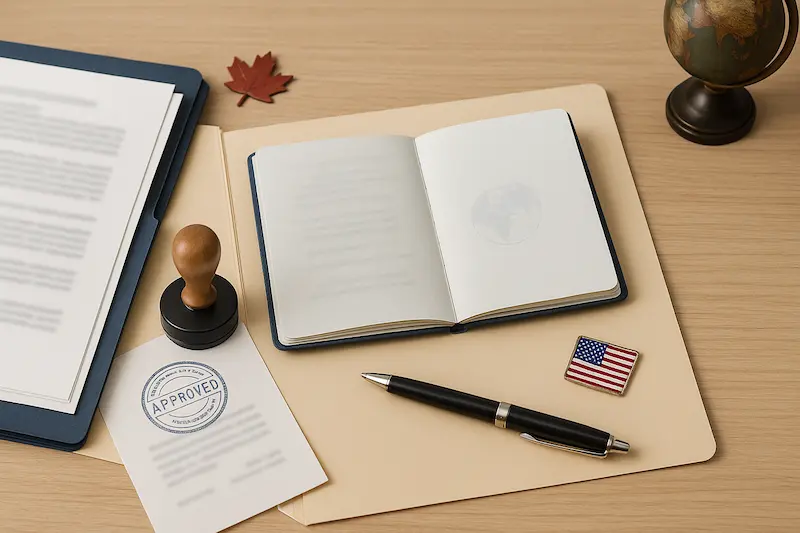Relocating involves far more than booking flights. Anyone planning to settle in Canada or the United States should anticipate applications where a certified translation of key records is decisive for smooth processing. Authorities and institutions typically reject or pause files that don’t meet format requirements, even when the underlying information is correct.
In that context, providers of certified translation deliver signed and sealed translations that accompany a copy of the original and follow the formats immigration offices, universities, and credential evaluators expect. Paying attention to these formalities prevents “incomplete documentation” notes and repeat submissions.
What a certified translation is—and why it’s required
A certified translation is a translation in which the professional translator formally attests that the English (or French, for Canada) version is true and complete relative to the original. In Canada, applications generally require any non-English/French document to be filed with a proper translation and supporting statements. In the U.S., submissions to immigration authorities must include a translation accompanied by a signed certification of accuracy and translator competence. In both systems, the format can be as important as the content: missing seals, absent declarations, or unbound pages can trigger requests for evidence or outright rejection.
Argentine records that often need translation
- Civil status records: birth, marriage, divorce, and death certificates.
- Identity documents: passport and, in some cases, DNI (pages with biographical data).
- Criminal record and medical clearances, when the visa class requires them.
- Education documents: diplomas, transcripts, and course descriptions for credential evaluation, academic admission, or professional licensing.
- Employment and business papers: offer letters, contracts, powers of attorney, articles of incorporation, and other corporate records relevant to your immigration or work plan.
Practical tip: Scan every page that contains seals, stamps, endorsements, or notes on the reverse side. If the original has multiple pages, keep them together in a single file so the certified translation can be issued as one bound set.
How certification works and how translations are delivered
Reputable providers typically follow a workflow that includes translation by qualified linguists, quality review, a signed certification page, official stamp, and an annex of the source document. When an authority requires it, the service can also arrange notarization or additional legalizations. Delivery combines digital files suitable for online portals with hard copies for agencies that still require paper submissions or sealed envelopes. Clear guidance on how to attach translations—whether uploading PDFs to a portal or mailing physical sets—can save days at critical stages.
How to choose a provider
- Immigration and academic experience: look for teams familiar with IRCC/USCIS processes and credential evaluators (e.g., WES, IQAS).
- Clear certification package: translator signature, company stamp, and inclusion of all relevant pages of the original.
- Breadth of languages: helpful if your file includes records from different countries or jurisdictions.
- Notarization/legalization options: some institutions explicitly require notarized translator statements.
- Logistics and support: physical delivery where needed and instructions for electronic submissions.
A short timeline of when translations are usually needed
- Before filing immigration forms: to ensure the entire packet is complete from the start.
- When applying to universities or licensing bodies: many academic evaluators require translations sent under specific conditions.
- During family-based processes: civil status evidence often triggers translation requirements, especially if it carries marginal notes or amendments.
- For employment-related filings: job offers, contracts, or corporate documents may need certified English versions depending on visa category.
Pre-departure checklist to save time
Personal documents
- Recent civil status certificates (with apostille if required by the receiving body), valid passport, and—where applicable—criminal record certificates already requested.
- Certified translations for any record not issued in English or French, prepared in the correct format and ready to upload or submit.
Education and work
- Diplomas, transcripts, and course lists for evaluation or admission.
- Employment letters or contracts with their certified translation if they form part of your visa or licensing file.
File hygiene
- Maintain consistent spellings of names across documents (accents, hyphens, and middle names included).
- Keep document numbers and dates legible; request re-issues if seals or stamps are unclear.
- Store a digital master set (PDF) and a physical set in case a paper submission is requested.
Avoid delays: format your file correctly
The most common stumbling blocks are formal errors: translations without a certification statement, missing seals or signatures, loose pages without clear binding, or annexes that don’t include every stamped side of the original. Choosing a provider that signs and stamps each translation, attaches a copy of the source, and understands the acceptance standards of immigration offices, universities, and evaluators will minimize requests for evidence and resubmissions. For applicants who need consistent acceptance across both countries, services offering official translation for Canada and USA are designed to align with the typical expectations on either side of the border, helping your case move forward without unnecessary back-and-forth.

Comentarios